Posts belonging to Category Live Sound

February 18, 2022
|
Posted by Jon (admin)
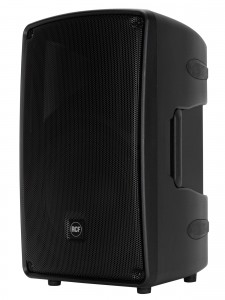
Last year, I was in the market for some compact, lightweight, loud PA speakers for my own live sound system. I considered the Yamaha DSR112–a favorite in the powered speaker market, and one of the loudest in its class. But I was somewhat put off by the heavier weight and relatively high price compared to other similar speakers. Then I discovered the RCF HD12-A. The HD12-A seemed to fit the bill for what I was looking for. It’s a compact, lightweight, powered speaker that has excellent sound quality and can go really loud–some say on the order of the DSR112. (more…)
 Categories: Live Sound, Reviews
|
Categories: Live Sound, Reviews
|  Tags: active, hd-12a, hd12-a, hd12a, powered, rcf, Review, Speakers
Tags: active, hd-12a, hd12-a, hd12a, powered, rcf, Review, Speakers

April 28, 2020
|
Posted by Jon (admin)

I’ve recently started jamming with some guys around the studio once in a while just for fun, but I ran into a slight problem: I need to keep my drum mics connected to my mic preamps so they’re always ready for recording drum tracks. However, I also needed to connect my drum mics to my live mixer (a Behringer X-Air XR18) so I can use my in ear monitors and add drums to the mix when jamming. So to put it simply, I needed a way to split the signals from my drum mics and send them to a couple of different sets of inputs. (more…)
 Categories: Live Sound, Recording, Reviews, Tips for Artists & Bands, Tips for Engineers
|
Categories: Live Sound, Recording, Reviews, Tips for Artists & Bands, Tips for Engineers
|  Tags: behringer, Drums, mic, microphone, mike, ms8000, Recording, Review, splitter
Tags: behringer, Drums, mic, microphone, mike, ms8000, Recording, Review, splitter

February 2, 2020
|
Posted by Jon (admin)
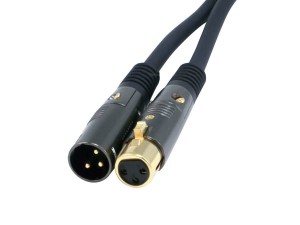
A while back, I was in need of a few more XLR mic cables for use around the studio. After reading some positive reviews of other products from Monoprice, I decided to give their Premier Series XLR Microphone Cables a try. The specs are impressive. They use a thick, rubber-jacketed cable with a braided copper shield, and claim to use 16 AWG conductors (more about that later). The metal XLR connectors have gold-plated pins and are serviceable–as opposed to the molded plastic connectors found on many budget mic cables. Finally, the Monoprice cables sell for considerably less than comparable cables from other brands, and include a lifetime warranty–you certainly won’t get that with any other “budget” mic cables. (more…)
 Categories: Live Sound, Recording, Reviews
Categories: Live Sound, Recording, Reviews

September 30, 2019
|
Posted by Jon (admin)
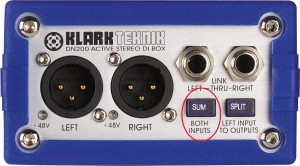
In my article, The Stereo to Mono Summing Cable that No One Makes, I described how to build (or buy) a cable that will take a stereo unbalanced signal and sum it to mono for connection to a PA system (mixer, power amp, etc.). You can connect the output end of such a mono-summing cable directly to a regular line 1/4″ line input. If, however, you need a balanced signal for connection to an XLR mic input on a mixer, you’ll need to use a mono-summing cable in conjunction with a DI box. Since writing that article, there have been several DI boxes that have hit the market that do something similar to what the mono-summing-cable-plus-DI-box combo do, so I thought it might be good to provide a quick overview of some of them. I’ve decided to list these in the order of the selling price from least to greatest. (more…)
 Categories: Live Sound, Mono Summing, Reviews
|
Categories: Live Sound, Mono Summing, Reviews
|  Tags: box, boxes, DI, direct, inject, mono, stereo, summing
Tags: box, boxes, DI, direct, inject, mono, stereo, summing

September 27, 2019
|
Posted by Jon (admin)
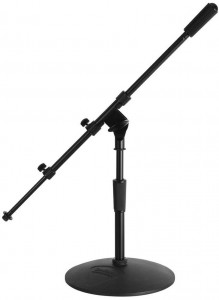
After years of recording and doing live sound, I’ve discovered that buying a mic stand for your kick drum is NOT where you should try and save some money. It’s just not worth it. A cheap stand will be tipping and slipping until you’re ready to pull your hair out. You’ll try all kinds of creative hacks involving duct tape, string, and sandbags to prevent it, only to have it happen again in the middle of a session or live gig. With that being said, I’d like to recommend a couple of specific mic stands that should serve you well in this application. (more…)
 Categories: Live Sound, Recording, Reviews, Tips for Artists & Bands, Tips for Engineers
|
Categories: Live Sound, Recording, Reviews, Tips for Artists & Bands, Tips for Engineers
|  Tags: base, BASS, best, boom, DRUM, favorite, KICK, mic, microphone, mike, mount, recommended, round, stand, tripod
Tags: base, BASS, best, boom, DRUM, favorite, KICK, mic, microphone, mike, mount, recommended, round, stand, tripod

September 26, 2019
|
Posted by Jon (admin)
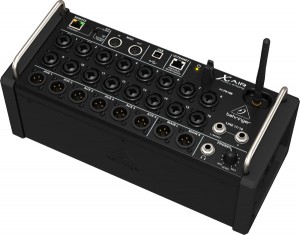
I’ve owned a Behringer X-Air XR18 digital mixer for a few years now. I still love it and highly recommend it. I’ve used it mostly around my studio for band rehearsals, and for a while at church while we were waiting for warranty repairs on our X32. In both of those settings, I used it in Wi-Fi Client mode, with it logging on to an external router so my control devices (phone, tablet, & PC) could also have access to the Internet. I’ve also used my XR18 in Access Point mode briefly around my studio and had used it as an Access Point on one gig. In both of those scenarios I had zero problems out of it. I had read some gig horror stories on forums about Wi-Fi problems using the built-in Access Point with the X-Air series, but had not experienced it for myself–until recently. (more…)
 Categories: Live Sound, Technology
|
Categories: Live Sound, Technology
|  Tags: behringer, best, disconnects, drops, errors, practices, problems, wi-fi, wifi, X-Air, Xair, XR18
Tags: behringer, best, disconnects, drops, errors, practices, problems, wi-fi, wifi, X-Air, Xair, XR18

September 24, 2019
|
Posted by Jon (admin)
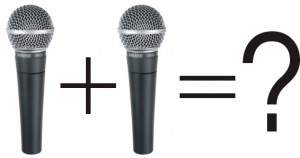
One of my most popular articles has been The Mono Summing Cable that No One Makes. I’ve been contacted by more readers regarding that article than probably any other that I’ve written. That article details why it’s a bad idea to use a regular Y-cable or TRS-to-TS cable to sum two (usually stereo left & right) line-level signals to mono by simply shorting the outputs together. It’s ok to use such a cable for SPLITTING a signal, but not for COMBINING or SUMMING two signals. That being said, it can work ok on some devices, but on others it can cause distortion, weird phasing artifacts, and possibly even damage the outputs of your gear. However, combining the outputs of two dynamic microphones is a different story, and in some applications it’s ok to do so with a regular XLR Y-cable, as we will soon see. (more…)
 Categories: Live Sound, Mono Summing, Recording, Tips for Artists & Bands, Tips for Engineers
|
Categories: Live Sound, Mono Summing, Recording, Tips for Artists & Bands, Tips for Engineers
|  Tags: balanced, combiner, connect, input, microphones, mics, mikes, mono, one, signals, splitter, summing, two, xlr, y-cable
Tags: balanced, combiner, connect, input, microphones, mics, mikes, mono, one, signals, splitter, summing, two, xlr, y-cable

August 20, 2019
|
Posted by Jon (admin)
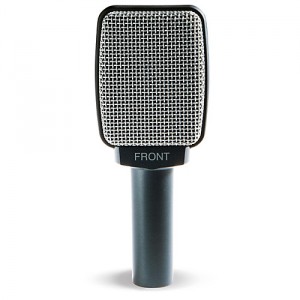
In this post, I’m going to discuss a mic that I’ve owned for a number of years: the Sennheiser e609 (also referred to as the “e609S” or “e609 Silver”). Like its sibling and confusingly-similar named Sennheiser e906, this dynamic mic is designed for use primarily as a guitar amp mic, but you could just as easily use it on a snare drum or rack tom of a drum kit. It employs a side-address design (similar to many large-diaphragm condensers) that makes it ideal for hanging it by the mic cable from the top of an amp, with the capsule pointing straight at the speaker. Some people will try this same trick with other dynamic mics (e.g. the Shure SM57), but that generally doesn’t work as well, because the source is off-axis with relation to the capsule. So if you like doing that sort of thing for miking an amp, the e609 may be just the thing for you. Even if you’re not hanging it by its cable and are putting it on a mic stand, it’s side-address design keeps the mic cable and connector pointing up or down instead of out, allowing the mic to sit closer to the amp and more out of the way than an SM57 or other similar mic. (more…)
 Categories: Live Sound, Recording, Reviews, Tips for Engineers
|
Categories: Live Sound, Recording, Reviews, Tips for Engineers
|  Tags: 609, amp, amplifier, e609, e609s, e906, electric, evolution, guitar, mic, microphone, Review, Sennheiser
Tags: 609, amp, amplifier, e609, e609s, e906, electric, evolution, guitar, mic, microphone, Review, Sennheiser

June 22, 2019
|
Posted by Jon (admin)

For a number of years, my live sound system was limited to only two monitor mixes shared between 4 stage monitor speakers. So for a typical 4-piece rock band, the drummer & bass player might share a mix, and then the guitar player and singer would share a mix. Each band member had their own monitor speaker, but they did NOT have their own monitor mix. There were two reasons for this. First, my old analog mixer only had two pre-fader aux/monitor sends. Second, the power amp that I used for my monitors was a standard stereo/2-channel amp. However, when my analog mixer bit the dust, I purchased a new Behringer X-Air XR18. The XR18 has 6 Aux Buses, each of which can be assigned as a pre-fader monitor send. This opened up some new possibilities for me: if only I had a 4-channel power amp, I could run 4 separate, independent monitor mixes–one for each speaker. Enter the Behringer iNuke NU4-6000, a 4-channel amp that seemed to be tailor-made for my intended purpose. (more…)
 Categories: Live Sound, Reviews
|
Categories: Live Sound, Reviews
|  Tags: amp, amplifier, behringer, nu4-6000, nu46000, nx 4-6000, nx4-6000, nx46000, power, Review
Tags: amp, amplifier, behringer, nu4-6000, nu46000, nx 4-6000, nx4-6000, nx46000, power, Review

February 7, 2019
|
Posted by Jon (admin)
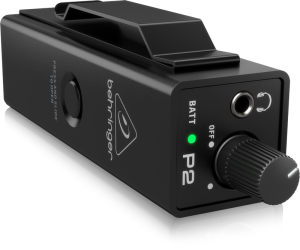
A couple of years ago, Behringer released the Powerplay P2, a beltpack headphone/personal monitor amp that has opened up the world of In Ear Monitors to even the most budget-conscious musician. What this compact, flexible little gem allows you to do is this: (more…)
 Categories: Live Sound, Recording, Reviews
|
Categories: Live Sound, Recording, Reviews
|  Tags: behringer, compact, ear, fischer, iem, in, monitor, p2, powerplay, producer, rack, stick, X-Air, x32, XR18
Tags: behringer, compact, ear, fischer, iem, in, monitor, p2, powerplay, producer, rack, stick, X-Air, x32, XR18
 February 18, 2022
|
Posted by Jon (admin)
February 18, 2022
|
Posted by Jon (admin)

 Categories:
Categories:  Tags:
Tags: 







